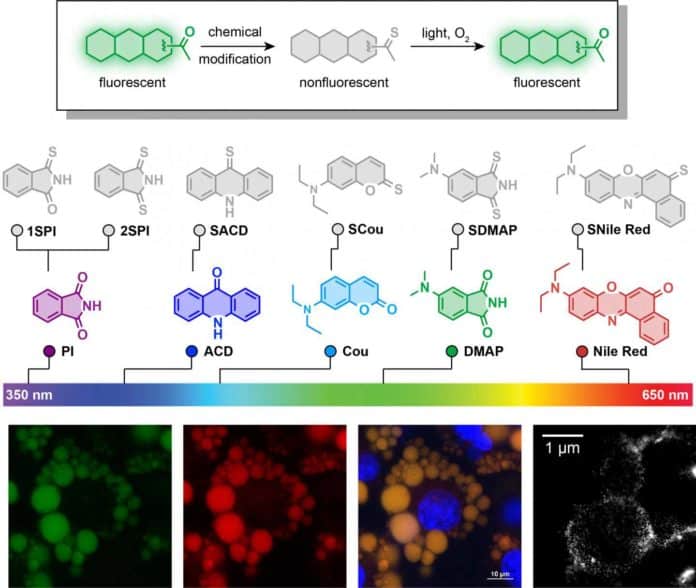Photoactivatable fluorophores afford powerful molecular to improve the spatial and temporal resolution of subcellular structures and dynamics. Scientists performed a single sulfur-for-oxygen atom replacement inside common fluorophores and developed a facile and general stratgey to acheive photoactivatable fluorogenic dyes across a broad spectral range.
Scientists have developed a single-atom switch to turn fluorescent dyes used in biological imaging on and off at will. The technique is expected to replace existing photoactivatable fluorophores that may only be activated with ultraviolet light or require toxic chemicals to turn on the fluorescence, characteristics that limit their usefulness.
Scientists used a phenomenon called photo-induced electron transfer (PET). They then put fluorophores in cages of thiocarbonyl, the moeity responsible for quenching. With one-step organic synthesis, they replaced an oxygen atom in the cage with one of sulfur. Doing this enabled them to generate the PET effect to quench fluorescence
Triggering the complex again with visible light near to the fluorescent molecule’s favored absorbance oxidized the cage in turn. That thumped out the sulfur and replaced it with an oxygen atom, reestablishing fluorescence.
Han Xiao, who joined Rice in 2017 with funding from the Cancer Prevention and Research Institute of Texas (CPRIT) said, “All it takes to make these is a little chemistry and one step. We demonstrated in the paper that it works the same for a range of fluorescent dyes. Basically, one reaction solves a lot of problems.”
“Scientists worldwide use fluorescent molecules to tag and track cells or elements within cells. Activating the tags with low-powered visible light rather than ultraviolet is much less damaging to the cells being studied and makes the long exposures of living cells required by super-resolution imaging possible. Super-resolution experiments by Theodore Wensel, the Robert A. Welch Chair in Chemistry at Baylor College of Medicine, and his team confirmed their abilities.”
“We feel this will be a really good probe for living-cell imaging. People also use photoactivatable dye to track the dynamics of proteins, to see where and how far and how fast they travel. Our work was to provide a simple, general way to generate this dye.”
The specialists found their strategy took worked on a wide scope of common fluorescent tags and could even be blended for multicolor imaging of targeted molecules in a single cell.
The study is published in the Journal of American Chemical Society.
